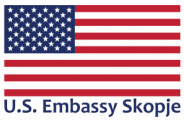What do you do when you feel miserable like China in a time of propaganda? You call your “friends”like Russia and Iran to join the misery and spread lies while people are in a panic state. Indeed, disinformation and conspiracy theories about the coronavirus are spreading as quickly as the virus, thanks to the usual players. Disinformation about the coronavirus is spreading as quickly as the outbreak, fueled by Iranian, Russian, and Chinese government-backed campaigns blaming and attacking the United States as the source for the scourge. “One narrative all three countries [including China] highlight is the notion that the United States is weaponizing the crisis for political gain and thus worsening its spread globally,” Rachel Chernaskey, a project manager for the Foreign Influence Election 2020 Project with the Foreign Policy Research Institute, or FPRI, wrote on 09 March[1].
Government officials, including about 10 percent of Iran’s parliament and various health officials such as Deputy Health Minister Iraj Harirchi, have tested positive for the virus. Iran has most aggressively pushed fake news about the illness. State-backed PressTV repeatedly has broadcast the theory that COVID-19 may be a U.S. manufactured bioweapon, or that Isreali and “Zionist” scientists have used the epidemic as a cover to engineer an even more deadly strain of the virus to spring on humanity, and specifically on Iran.
Russia, meanwhile, has used its considerable media reach via channels like RT to amplify statements coming out of Iranian leadership. Last week RT reported that Hossein Salami, chief of the Islamic Revolutionary Guard Corps, claimed that the virus was a U.S. weapon aimed at Iran and China. Russia is directing coronavirus-related disinformation at Eastern European audiences in a bid to drive anti-NATO sentiment among virus-spooked populations. The tactics range from the usual sort of anti-Western commentary on pro-Russian sites to hacking a legitimate news site to post a false story. A key target has been Lithuania, which sits between Russia’s client state Belarus and its exclave of Kaliningrad. In January, someone posted a false story on the Lithuanian news site kauno.diena.lt, or Kaunas Day, claiming that a U.S. soldier in Lithuania had COVID-19. (Since September, the country has hosted elements of the U.S. Army’s 1st Cavalry Division.) The story was up on the site for just a few minutes. “There is a case of hacking into a content management system. For the time being, we are in the process of deciding how this happened,” Kaunas Day’s Tadas Širvinskas told BNS, another Lithuanian news site[2].
Pro-Russian news outlets have published articles to stoke alarm or anger, either by taking facts out of context or speculating on future events. Eurasia Daily ran a March 21 story claiming that Lithuanian authorities intended to use the crisis to shut down pro-Russian media outlets, and another on March 23 claiming that the pandemic “exposed several serious gaps in public administration reforms” and that the Lithuanian government had destroyed strategic food reserves before the outbreak. Evidence suggests that pro-Kremlin propagandists have also targeted NATO friendly nations Ukraine and that not all the misinformation begins online. On February 24, a riot broke out in the Ukrainian town of Novi Sanzhary, four days after 73 evacuees from China — 48 Ukrainians and 29 non-Ukrainians — arrived in the country. A letter purporting to be from the Ukrainian Ministry of Health went to several journalists claiming that five of the refugees had COVID-19. The Ministry of Health denounced it as fake, but the misinformation spread faster than the truth. The result: an unruly protest in which police and citizens were injured.
At the same time, the Ukrainian military has accused Russian-backed militants in Eastern Ukraine of hiding COVID-19 testing numbers from the outside world. “Russian occupation administrations in the temporarily occupied territories of Donetsk and Luhansk regions are trying to convince the local population through mass media that no persons with coronavirus symptoms have been identified. At the same time, information is hidden that infectious departments of medical institutions, including military, overcrowded with high fever,” the Ukrainian military said in a March 24 statement.
According to Clint Watts, a senior fellow with FPRI, social media companies are trying, to separate disinformation from misinformation and factual information around the epidemic. They “can, and seem to be trying, to elevate accurate information about coronavirus, mitigating its spread and treating the outbreak. We social media users can help by continually flagging nonsense we see about coronavirus,” he said.
Meral Musli Tajroska – Psychologist, Consultant on violent extremism and radicalization, activist for gender equality.
Source: defenseone.com/
[1] https://www.defenseone.com/technology/2020/03/iran-and-russian-media-push-bioweapon-conspiracies-amid-covid19-outbreak/163669/
[2] https://www.defenseone.com/technology/2020/03/russia-pushing-coronavirus-lies-part-anti-nato-influence-ops-europe/164140/?oref=d-skybox


